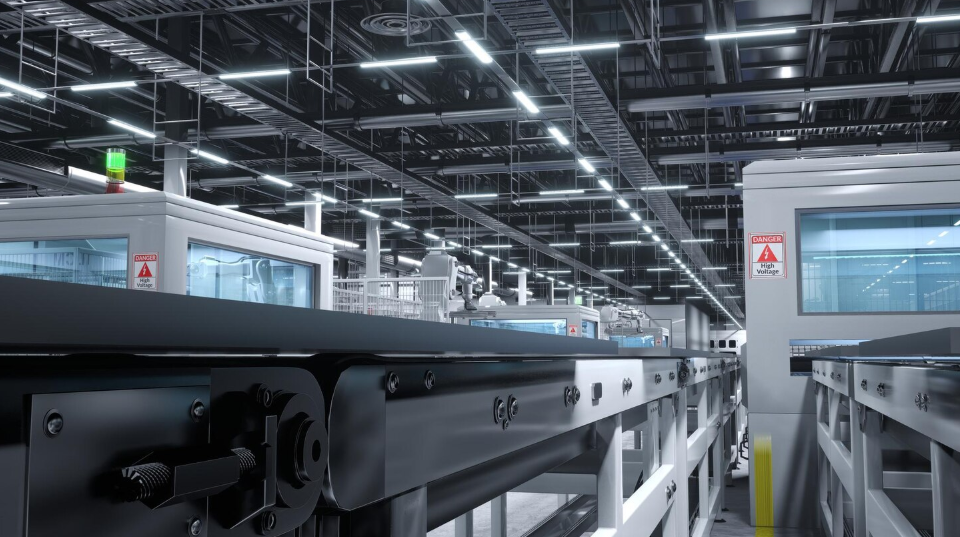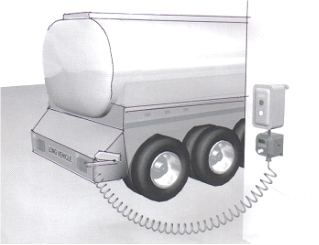💡Introduction
When you think of workplace safety, what comes to mind? Probably things like fire extinguishers, PPE, machine guards, or safety signs. But there’s one silent factor that affects every worker, every single day — lighting.
Good lighting is the unsung hero of workplace safety. It helps people see clearly, stay alert, and avoid accidents. On the other hand, poor lighting can lead to fatigue, errors, injuries, and even long-term health problems.
In this article, we’ll dive deep into the effects of bad or poor lighting in factories and offices, how it impacts safety and productivity, and what you can do to fix it.
🌑 What Exactly Is “Poor Lighting”?
Before we explore its effects, let’s clarify what “poor lighting” really means.
Poor lighting isn’t just about dim spaces. It can include:
- Insufficient light intensity — not enough light to see details clearly.
- Excessive brightness or glare — too much light or reflection that causes eye strain.
- Uneven lighting — some areas bright, others shadowy.
- Improper color temperature — lighting that’s too harsh (cold white) or too dull (yellowish).
- Flickering or unstable lights — causing visual discomfort or headaches.
- Dirty, unmaintained fixtures — reducing light output by 30–50%.
In factories and offices, even small lighting problems can create major safety and performance issues over time.
⚠️ The Hidden Dangers of Poor Lighting
Let’s uncover how bad lighting silently affects workers and organizations alike.
1. 👁️ Increased Risk of Accidents and Injuries
In factories, where workers handle heavy machinery, moving parts, or sharp tools, bad lighting can be deadly.
- Workers may misjudge distances or fail to notice hazards like spills, uneven surfaces, or obstacles.
- Poor visibility leads to slips, trips, and falls, which are among the most common workplace injuries.
- In offices, inadequate lighting can cause people to bump into furniture or misstep on stairs.
👉 Example:
A dimly lit stairway or corridor can cause a simple trip that leads to fractures or head injuries. Similarly, in a manufacturing area, a worker could reach into the wrong part of a machine due to poor illumination.
In short, lighting isn’t just about comfort—it’s about life and limb.
2. 🧠 Mental Fatigue and Reduced Concentration
Have you ever tried working under a flickering light or in a dull room for hours? It’s mentally exhausting.
Poor lighting causes the brain to work harder to interpret visual information, which leads to mental fatigue and reduced concentration. Over time, this can result in:
- Mistakes in production or paperwork
- Misreading of labels or instruments
- Increased human error in quality checks
Workers under poor lighting conditions tend to lose focus faster, which can severely impact productivity and safety in both factories and offices.
3. 😣 Eye Strain and Headaches
This is perhaps the most immediate and common effect of bad lighting.
Prolonged exposure to dim or glaring light causes eye strain, often accompanied by:
- Burning or dry eyes
- Blurred vision
- Frequent headaches
- Difficulty focusing on small details
In offices, where employees spend hours staring at computer screens, bad lighting compounds the problem, leading to digital eye strain or what doctors call Computer Vision Syndrome (CVS).
Over time, this doesn’t just affect comfort — it reduces work quality and increases absenteeism.
4. 😩 Drop in Productivity and Work Quality
Lighting has a direct effect on alertness and performance. Research shows that workplaces with optimized lighting experience higher output and fewer errors.
Bad lighting, on the other hand, leads to:
- Slower reaction times
- More rework or mistakes
- Lack of motivation and energy
- Reduced attention to detail
Think of it this way — when workers have to squint, strain, or struggle to see clearly, their mental bandwidth is spent on just “seeing,” not “doing.”
That’s an invisible drain on productivity that few managers notice until it’s too late.
5. 😔 Negative Impact on Morale and Mental Health
The emotional impact of lighting is often underestimated. Studies have shown that lighting affects mood, energy levels, and even hormonal balance.
- Dim environments can make people feel tired, gloomy, or depressed.
- Harsh, flickering fluorescent lights can create irritation and anxiety.
- Lack of natural light contributes to Seasonal Affective Disorder (SAD), especially in offices with no windows.
A poorly lit workspace can make employees feel undervalued or neglected — as if their comfort doesn’t matter. Over time, this leads to low morale and high turnover.
6. 🏭 Defective Products and Poor Quality Control
In industrial settings, poor lighting can have serious consequences for product quality.
If workers can’t clearly see what they’re inspecting, assembling, or labeling, errors multiply. Paint imperfections, surface defects, misalignments, or color mismatches may go unnoticed.
For industries like electronics, textiles, or pharmaceuticals — where precision is critical — inadequate lighting can result in entire batches being rejected or recalled.
That’s not just a safety issue — it’s a profitability issue too.
7. 🧍 Increased Risk of Ergonomic Issues
When lighting is poor, workers often adjust their posture unnaturally to see better — leaning forward, squinting, or bending awkwardly.
Over time, this leads to:
- Neck and back pain
- Shoulder stiffness
- Musculoskeletal disorders (MSDs)
Especially in office environments, this combination of poor lighting and bad posture creates chronic ergonomic injuries that reduce long-term employee well-being.
8. 💸 Hidden Economic Costs
The costs of poor lighting go far beyond energy bills. They include:
- Lost productivity
- Increased errors and product waste
- Medical expenses for eye-related issues
- Higher absenteeism
- Worker compensation claims after accidents
When you add it all up, improper lighting can silently drain thousands of dollars from a company every year — without anyone realizing the true cause.
🔍 Signs That Your Workplace Lighting Needs Improvement
Here are some red flags to watch for in factories and offices:
- Employees frequently complain about headaches or tired eyes.
- Workers bring personal lamps to their desks.
- You notice shadows or dark corners in work areas.
- Reflective surfaces create glare on computer screens or machines.
- Accident or error rates are unusually high.
- Lighting levels differ drastically between nearby workstations.
If any of these sound familiar, it’s time for a lighting assessment.
💡 Recommended Lighting Levels (in Lux)
Here’s a quick reference based on the Illuminating Engineering Society (IES) and Indian Factory Rules:
| Area / Task | Recommended Illumination (Lux) |
|---|---|
| Corridors, Staircases | 100–150 |
| General Office Work | 300–500 |
| Computer Workstations | 300 |
| Precision Assembly | 1000–2000 |
| Machine Shops | 300–500 |
| Inspection Areas | 500–1000 |
| Storage / Warehouses | 100–150 |
(1 lux = 1 lumen per square meter)
👉 Pro Tip: Use a lux meter to measure actual illumination and compare it with these standards.
🛠️ How to Fix Poor Lighting in Factories and Offices
The good news? Poor lighting is one of the easiest workplace hazards to correct. Here’s how:
1. Upgrade to LED Lighting
LED lights are energy-efficient, long-lasting, and provide consistent brightness. They’re available in various color temperatures (warm, neutral, cool) suitable for different environments.
- Use cool white LEDs for factories — they enhance alertness and clarity.
- Use neutral or warm white LEDs in offices — they reduce glare and eye fatigue.
2. Maintain and Clean Fixtures Regularly
Dust, oil vapors, and dirt can cut light output by up to 50%.
Schedule routine cleaning of lighting fixtures, lenses, and reflectors. Also, replace burnt-out bulbs immediately — even one dark spot can affect visibility in industrial areas.
3. Eliminate Glare and Shadows
Position lights strategically to avoid glare on screens or shiny surfaces.
In offices:
- Use diffusers or lampshades.
- Place computer screens perpendicular to windows.
In factories:
- Use indirect lighting or angled fixtures to minimize harsh reflections.
4. Make the Most of Natural Light
Daylight is free, healthy, and incredibly effective.
- Keep windows clean and unobstructed.
- Use light-colored walls and ceilings to reflect sunlight.
- Consider skylights in large manufacturing halls.
Even partial daylight exposure can improve workers’ alertness and mood.
5. Conduct Lighting Audits
A lighting audit helps identify dark zones, uneven illumination, and energy inefficiencies.
You can do a basic assessment internally or hire professionals who use lux meters and lighting simulation software to design optimal setups.
6. Provide Task Lighting
For precision tasks or long reading hours, supplement general lighting with adjustable task lights.
- In offices, use desk lamps with brightness controls.
- In factories, install spotlights or LED panels over specific workstations.
This allows workers to customize lighting to their comfort level.
7. Train Employees
Sometimes the issue isn’t the light — it’s how people use it.
Train workers to:
- Report malfunctioning lights.
- Avoid blocking light sources with objects.
- Take short breaks to rest their eyes during long visual tasks.
Simple awareness can make a big difference in maintaining optimal lighting conditions.
🌟 The Connection Between Lighting, Safety, and Well-Being
Lighting isn’t just about visibility—it’s about how people feel and function.
When workplaces have the right illumination:
- Accident rates drop.
- Employees feel energized and valued.
- Productivity and morale go up.
- Health complaints go down.
In short, lighting is a powerful tool for safety culture. It silently communicates that the organization cares about its people.
🔚 Final Thoughts
Bad or poor lighting might not seem like a big deal — until you experience its effects firsthand. From accidents and fatigue to poor morale and wasted resources, it can quietly erode workplace safety and efficiency.
Investing in proper illumination is one of the simplest yet most impactful ways to improve your factory or office environment. It pays back through fewer injuries, happier employees, and higher productivity.
So the next time you step into your workplace, take a look around. Are there dark corners? Flickering lights? Tired eyes?
If yes — it’s time to switch on a brighter, safer future. 💡
✅ Remember:
Good lighting isn’t an expense — it’s an investment in safety, performance, and well-being.
🔁 Readers also enjoyed these blog posts:
- Safety Management’s Role: The Unsung Hero Behind Every Successful Organization
- Safety Management and Its Responsibilities: Protecting People, Preventing Hazards, and Promoting a Culture of Care
- Benchmarking for Safety Performance: A Key to Continuous Improvement
“Start Your Website Journey Today – Exclusive Hostinger Discounts!”

Turn Any Idea into Viral,
Jaw-Dropping AI Videos in Seconds!










